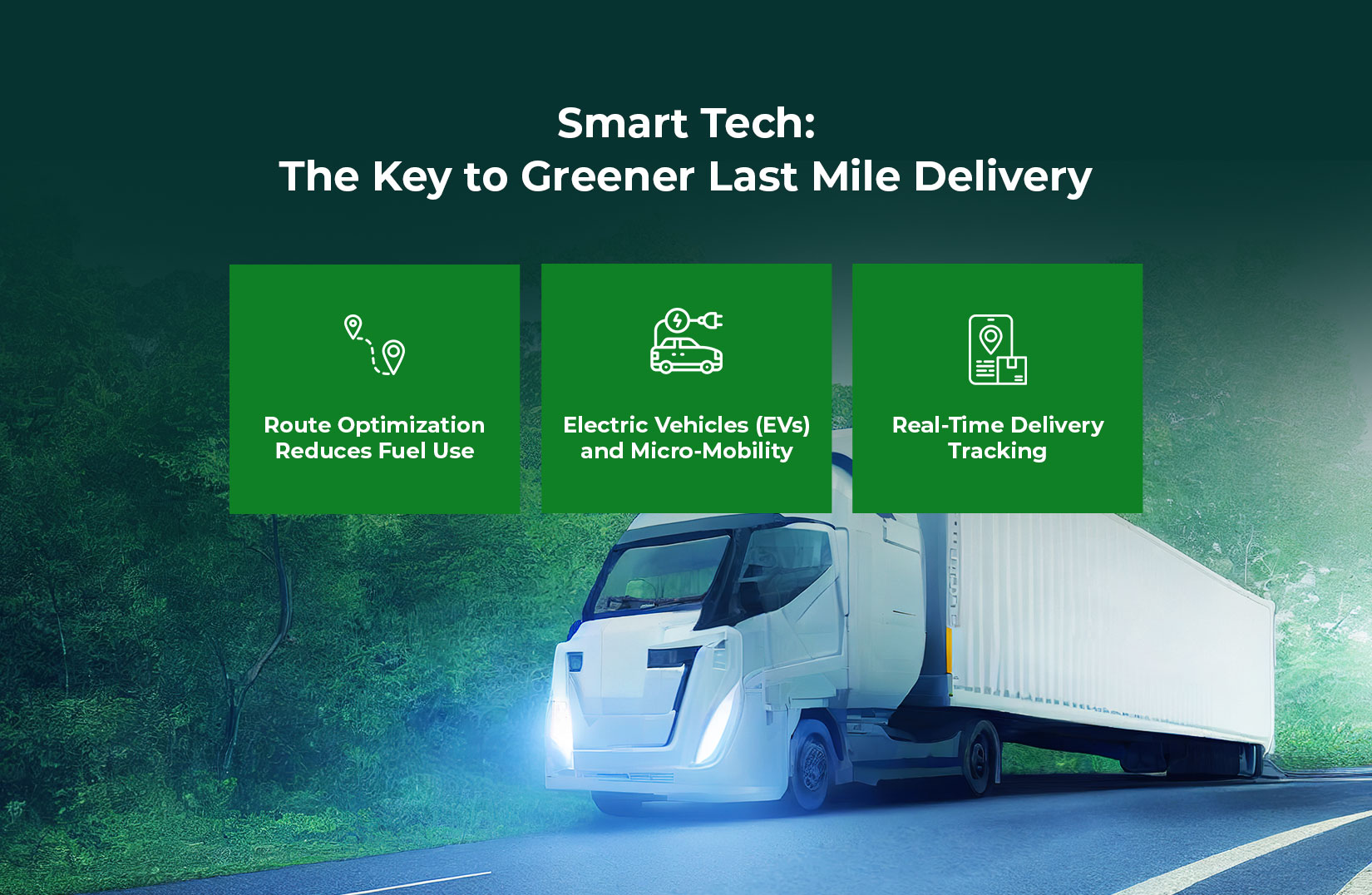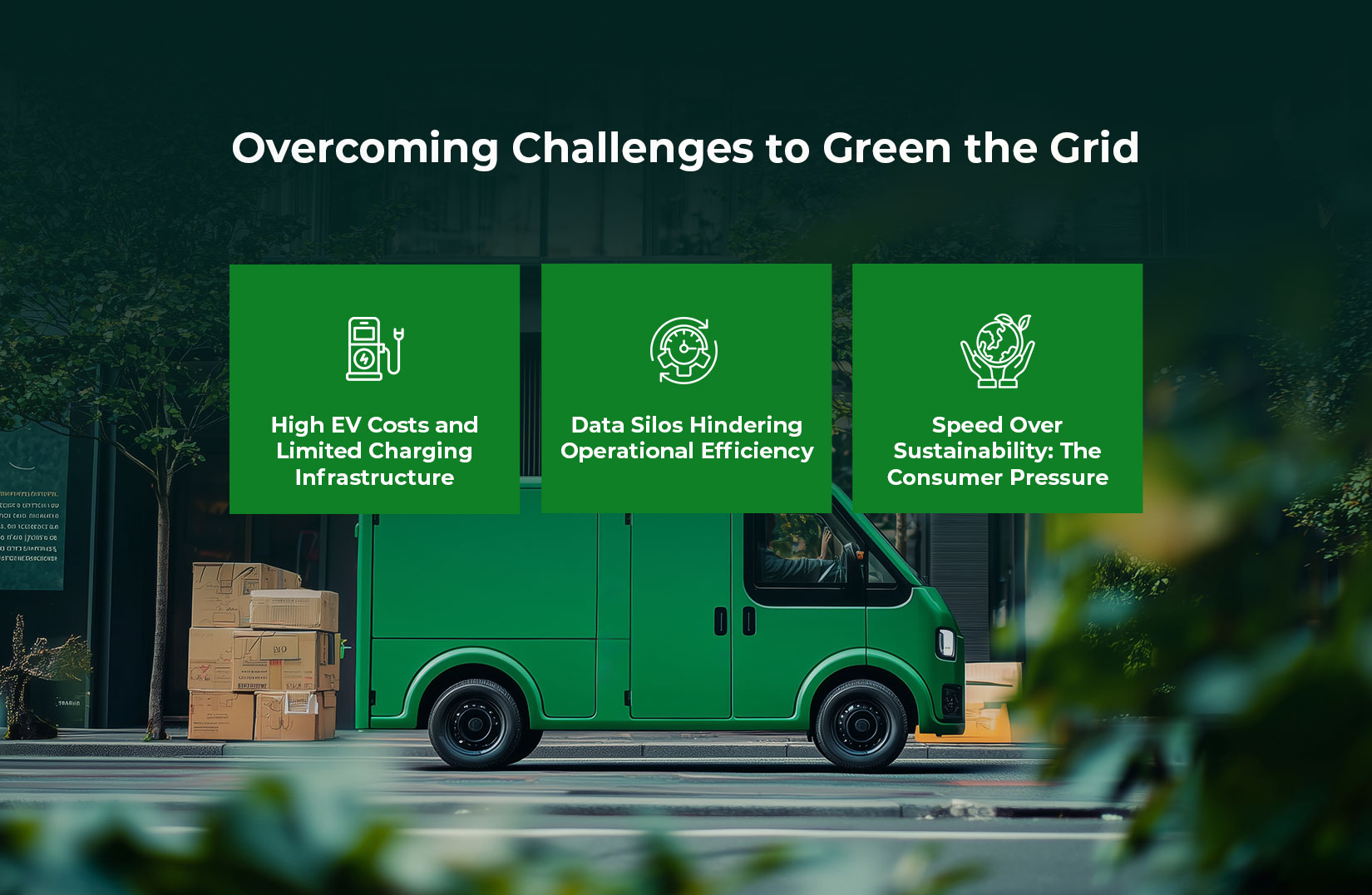
Eco-Friendly Last Mile: Unlocking the Green Grid
As climate change intensifies and consumer demands grow, logistics companies are facing a two-fold challenge. To deliver faster, and do it greener. Warehouses and long-haul transportation have seen efficiency improvements. But, the last mile logistics remains the most carbon-intensive and cost-heavy segment of the supply chain. It accounts for 53% of total shipping costs and a significant portion of urban CO₂ emissions, especially in congested areas.
To stay competitive and sustainable, businesses must pivot toward eco-friendly last mile logistics solutions. This blog explores how technology, innovation, and strategic planning are transforming the last mile into a greener, smarter grid.
The Environmental Toll of Traditional Last Mile Logistics
The last mile- the final step in the delivery process from a transportation hub to the customer’s doorstep is resource-heavy. With the rise of eCommerce and same-day delivery expectations, the volume of delivery vehicles on the road has skyrocketed.
– In urban areas, delivery vans can contribute to over 30% of traffic congestion.
– The World Economic Forum estimates that urban last-mile delivery emissions will increase by 32% by 2030 if no changes are made.
– Missed deliveries and route inefficiencies lead to more fuel consumption, higher costs, and a larger carbon footprint.
This is where sustainable transformation is not just a moral imperative- it’s a competitive necessity.
Smart Tech: The Key to Greener Last Mile Delivery

Modern last mile delivery software is helping logistics providers reduce emissions, optimize delivery routes, and improve operational efficiency. Here’s how:
1. Route Optimization Reduces Fuel Use:
AI-powered last mile logistics software leverages real-time traffic data and geocoding to create the most efficient delivery routes. This reduces idle time, unnecessary detours, and fuel usage. A study by McKinsey shows that dynamic route planning can cut delivery time by up to 20% and fuel costs by up to 15%.
2. Electric Vehicles (EVs) and Micro-Mobility:
Companies are transitioning from diesel vans to EVs, cargo bikes, and even autonomous delivery bots. Amazon, for instance, has committed to deploying 100,000 electric delivery vehicles by 2030. Last mile delivery solutions now integrate EV-specific routing that considers charging station locations and battery range, ensuring smooth, emission-free deliveries.
3. Real-Time Delivery Tracking:
With advanced last mile delivery tracking software, businesses provide customers with accurate ETAs, reducing the chance of missed deliveries. This minimizes repeat trips and wasted fuel. Additionally, tracking builds trust and enhances customer satisfaction, a win for both sustainability and service quality.
Urban Consolidation and Green Delivery Zones
Cities are beginning to rethink how goods move through their streets to reduce congestion and emissions. Urban Consolidation Centers (UCCs) act as intermediate hubs located on the outskirts of dense urban areas. Deliveries are bulk-shipped to these hubs and then distributed using eco-friendly modes such as electric vans, cargo bikes, or even autonomous delivery robots. This approach minimizes the number of large, polluting vehicles entering city centers and helps streamline last mile logistics operations.
Additionally, many cities are introducing Low-Emission Zones (LEZs) or Zero-Emission Zones (ZEZs) to restrict high-emission vehicles from entering key areas. Logistics providers that leverage smart last mile delivery software gain a clear advantage. By planning routes, optimizing fleet types, and ensuring compliance with these evolving environmental regulations they take the edge.
Sustainability Metrics in Last Mile Delivery Software
Green delivery isn’t just about switching to electric vehicles- it’s about tracking, analyzing, and improving overall performance. Modern last mile logistics software comes equipped with sustainability dashboards that provide real-time visibility into key metrics such as:
– Carbon emission per delivery: Track emissions for each route to measure environmental impact and optimize accordingly.
– Fuel efficiency by route: Identify high-consumption routes and adjust planning for better fuel economy.
– EV Usage and changing metrics: Monitor electric vehicle deployment, battery levels, and charging station utilization.
– Failed vs successful delivery ratio: Reduce repeat trips and resource wastage through delivery accuracy insights.
This data empowers businesses to set and meet environmental KPIs, helping them align with global standards like ESG and Scope 3 emissions reporting.
Case Study: Eco-Optimization in Action
A leading retail brand adopted an AI-powered last mile delivery solution to optimize its urban delivery operations and reduce environmental impact. By integrating smart route planning, electric vehicle deployment, and real-time tracking, the company significantly improved both efficiency and sustainability. Over a 12-month period:
– Fuel consumption dropped by 22% due to optimized routing and reduced idling.
– On-time delivery rate improved by 18%, enhancing customer satisfaction.
– Carbon emissions were cut by 30 tons annually, aligning with their ESG goals.
This transformation showcases how intelligent last mile logistics software can create measurable, green outcomes.
Overcoming Challenges to Green the Grid

While the benefits are clear, transitioning to eco-friendly last mile logistics isn’t without hurdles:
1. High EV Costs and Limited Charging Infrastructure:
While electric vehicles offer long-term savings and environmental benefits, the upfront investment remains high for many logistics providers. Additionally, lack of widespread, fast-charging stations in tier-2 and tier-3 cities, creates operational uncertainty and range anxiety among fleet managers.
2. Data Silos Hindering Operational Efficiency:
Without seamless integration between fleet, inventory, and delivery systems, real-time insights get lost. This leads to poor decision-making, delivery delays, and inefficiencies that undermine the potential of advanced last mile delivery software.
3. Speed Over Sustainability: The Consumer Pressure:
Tight delivery windows and rising customer expectations often force logistics providers to prioritize speed over eco-friendly practices. Green routing, consolidated drops, or slower sustainable options are frequently sidelined to meet fast delivery demands.
However, with the right last mile delivery tracking software, businesses can find the balance- delivering quickly, reliably, and responsibly.
Final Thoughts: Sustainability as a Strategy
The path to green logistics begins with the last mile. By investing in last mile delivery software that supports route intelligence, real-time tracking, and sustainability analytics, businesses don’t just meet environmental goals. They also gain operational efficiency, reduce costs, and improve customer loyalty.
Sustainable last mile logistics isn’t a futuristic vision- it’s today’s competitive edge. Thus, by booking a demo with LogiNext Solutions, you are taking the first step towards the best last mile software. Click on the red button and empower your company.
44







@LogiNext